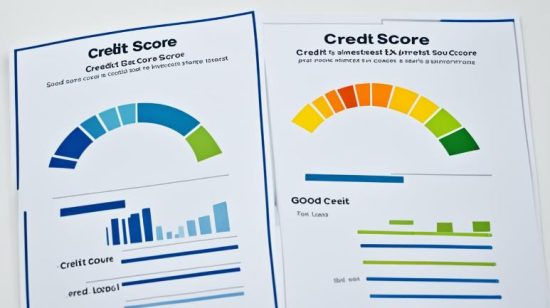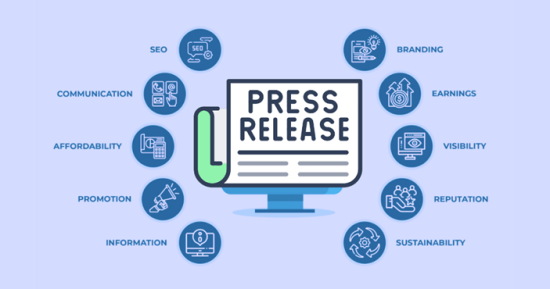
Did you know that interest bearing loans are a cornerstone of the global economy? In fact, the total outstanding consumer debt in the United States alone amounted to a staggering $4.2 trillion in 2023*. Understanding the fundamentals of interest bearing loans is essential in managing your finances and making informed borrowing decisions.
Here, we will delve into the concept of interest bearing loans, providing you with a comprehensive understanding of how they work, the types of interest involved, advantages, calculations, repayment strategies, and potential risks. Whether you are considering a mortgage, personal loan, student loan, or auto loan, equipping yourself with this knowledge will empower you to navigate the world of borrowing with confidence.
What is an Interest Bearing Loan?

An interest bearing loan is a type of loan where interest is charged on the principal amount borrowed. When you take out an interest bearing loan, you are not only responsible for repaying the principal, but also for paying the accrued interest over time. This means that the total amount you owe will increase as interest accrues on the loan.
How Interest Accrues on Loans?
Interest accrual on loans is the process of calculating and adding interest to the outstanding balance. The interest rate specified in the loan agreement determines the amount of interest that accrues over time. Generally, the interest is calculated monthly or annually, depending on the terms of the loan.
For example, let’s say you have an interest bearing loan with an annual interest rate of 5%. If you borrowed $10,000, you would accrue $500 in interest over the course of a year. This interest is then added to the outstanding balance, increasing the total amount owed.
Types of Interest: Fixed vs Variable
Interest bearing loans can have either fixed interest or variable interest.
Fixed interest remains constant throughout the loan term. This provides predictability for borrowers, as they know exactly how much interest they will pay each month. Fixed interest rates are often preferred for long-term loans or when interest rates are expected to rise in the future.
Variable interest, on the other hand, fluctuates based on market conditions or a specific index. This means that the amount of interest you pay can vary from month to month. While variable interest rates can sometimes be lower initially, they come with the risk of increasing over time. Borrowers who choose variable interest rates should be prepared for potential changes in their monthly payments.
How Do Interest Bearing Loans Work?
Interest-bearing loans provide borrowers with a specific amount upfront, which they agree to repay over time along with accruing interest. The repayment process involves regular installments, typically monthly, that include both principal and interest portions. As payments are made, the outstanding balance decreases, reducing the amount of interest accrued over time. This results in a larger portion of subsequent payments going towards the principal, gradually reducing the overall debt. Understanding this structure helps borrowers plan and budget for repayments, ensuring timely and manageable financial management.
Advantages of Interest Bearing Loans
Interest bearing loans offer numerous benefits that make them a preferred choice for borrowers. Two key advantages of interest bearing loans include the opportunity to improve your credit score and the investment potential they provide.

Building Credit Score
One of the major benefits of interest bearing loans is their positive impact on your credit score. By taking out and responsibly repaying an interest bearing loan, you can demonstrate your financial responsibility to lenders, which in turn can lead to an improvement in your credit score. Timely payments on your loan show that you are capable of managing debt effectively, which is viewed favorably by credit bureaus. A higher credit score can make it easier to obtain future loans with better terms and interest rates.
Opportunities for Investment
Interest bearing loans also offer investment potential. When you have access to funds through a loan, you can use those funds to invest in assets or ventures that have the potential to generate a return higher than the interest paid on the loan. This creates an opportunity for wealth accumulation and financial growth. Whether you choose to invest in real estate, stocks, or a business venture, interest bearing loans can provide the capital needed to pursue these investment opportunities. By making wise investment decisions, you can increase your overall net worth.
Calculating Interest on Your Loan
When considering a loan, it’s important to understand how interest is calculated. Different methods may be used by lenders to determine the interest accrued on your loan. Knowing these methods can help you make informed decisions and manage your loan effectively.
Understanding the Annual Percentage Rate (APR)
The Annual Percentage Rate (APR) is a key factor in evaluating the cost of borrowing. It represents the annual cost of the loan, including both the interest rate and any additional fees or charges. The APR allows you to compare loan offers from different lenders and understand the true cost of borrowing.
For example, a loan with a lower interest rate but higher additional fees may have a higher APR than a loan with a higher interest rate but lower fees. By considering the APR, you can assess the overall affordability of a loan and choose the option that best suits your financial situation.
Using Loan Amortization to Predict Payments
Loan amortization is a process that helps borrowers predict their loan payments over the term of the loan. It breaks down each payment into portions that cover both the principal and the interest. This allows you to see how your payments contribute to reducing the outstanding balance over time.
Loan amortization schedules provide a clear picture of how your monthly payments are allocated between interest and principal. They also allow you to understand the total interest paid over the loan’s duration. By examining the amortization schedule, you can assess the impact of different interest rates, payment frequencies, or additional payments on your loan.
Interest Bearing Loans vs. Interest-Free Loans: Which Is Better for You?

Choosing between interest-bearing and interest-free loans depends on factors like your financial situation, loan purpose, and preferences. Interest-bearing loans typically offer lower rates, making them more affordable for long-term, substantial borrowing, such as home purchases or business financing. Interest-free loans are advantageous for short-term borrowing or specific circumstances, often as promotional offers, and can be suitable if you can repay within the interest-free period.
Consider your financial goals, budget, and total borrowing costs when deciding, assessing the impact of interest on your repayments and overall obligations. Evaluate your ability to manage monthly payments and the benefits or drawbacks of each option.
The Role of Creditworthiness in Interest Bearing Loans
Your creditworthiness significantly impacts interest-bearing loans, affecting interest rates and loan terms. A higher credit score usually results in lower interest rates and more favorable terms, while a poor score can lead to higher rates or loan denial. Lenders assess factors like payment history, credit utilization, credit history length, and credit mix to determine your creditworthiness.
Maintaining a positive credit history and good credit score demonstrates responsible financial behavior, reducing perceived risk for lenders and potentially saving you money. Improving your credit score by making timely payments and keeping credit utilization low can enhance your chances of securing affordable loans.
Common Types of Interest Bearing Loans
When it comes to borrowing money, there are various types of interest bearing loans available. Each loan serves a specific purpose and has its own set of terms and conditions. Understanding these common types of loans can help you make informed financial decisions. Let’s explore some of the most common types of interest bearing loans:
Mortgages
Mortgages are loans used to finance the purchase of a property. Whether you’re buying your first home or investing in real estate, a mortgage is a popular option. These loans often have long repayment terms, typically spanning from 15 to 30 years. Depending on the lender and your financial circumstances, mortgages can have fixed or variable interest rates. It’s important to consider factors such as your credit score, down payment amount, and the current housing market when applying for a mortgage loan.
Personal Loans
Personal loans are versatile loans that individuals can use for various purposes. Whether you’re looking to consolidate debt, cover unexpected expenses, or make home improvements, a personal loan can provide the necessary funds. Unlike mortgages, personal loans are typically unsecured loans, meaning they do not require collateral. The interest rates and repayment terms may vary depending on the lender and your creditworthiness. It’s important to compare different loan offers and understand the terms before making a decision.
Student Loans
Student loans are specifically designed to help students pay for their education. These loans can cover tuition fees, textbooks, accommodation, and other educational expenses. One of the advantages of student loans is that they often have lower interest rates compared to other types of loans. Additionally, student loans usually offer flexible repayment options, such as deferred payments until after graduation. It’s crucial to research available student loan options, including federal and private loans, to determine the best fit for your educational needs.
Auto Loans
Auto loans are used to finance the purchase of a vehicle. Whether you’re buying a new car or a used one, an auto loan can help make your dream car a reality. These loans can be secured against the vehicle itself or unsecured, depending on your creditworthiness and the lender’s policies. Auto loans typically have fixed interest rates and repayment terms ranging from 3 to 7 years. Before getting an auto loan, it’s essential to consider factors such as your budget, the total cost of the vehicle, and the interest rate.
Repayment Strategies for Interest Bearing Loans

When it comes to repaying interest bearing loans, there are several strategies you can employ to pay off your debts more efficiently and save on interest costs.
Here are some tips to help you pay off your loans faster:
- Make Extra Payments: Consider making extra payments towards the principal amount of your loan. By reducing the outstanding balance, you can shorten the loan term and save on overall interest costs.
- Priority Approach: Prioritize your loans based on interest rates. Start by paying off loans with the highest interest rates first, as this strategy can save you money in the long run.
- Refinance Wisely: If you have the opportunity to refinance your loan to a lower interest rate or a shorter term, it may be a smart move. However, make sure to evaluate any fees or charges associated with refinancing before making a decision.
FAQs on Interest Bearing Loan
Should I choose an interest bearing loan or an interest-free loan?
Choosing between an interest bearing loan and an interest-free loan depends on various factors, including your financial situation, loan purpose, and preferences. Interest bearing loans generally have lower interest rates compared to interest-free loans, making them more affordable in the long run. However, interest-free loans can be advantageous for short-term borrowing or specific circumstances where interest costs are not a concern. It is important to consider your financial goals, budget, and the total cost of borrowing when deciding between the two.
What are some repayment strategies for interest bearing loans?
When it comes to repaying interest bearing loans, there are several strategies borrowers can use to pay off the debt more efficiently and save on interest costs. Making extra payments towards the principal can help reduce the outstanding balance and shorten the loan term. Prioritizing higher-interest loans can save money in the long run by focusing on paying off the loans with the highest interest rates first. Refinancing the loan to a lower interest rate or shorter term can also be a smart strategy to save on interest costs, although it is important to consider any fees or charges associated with refinancing.
How creditworthiness impact the interest bearing loans?
Creditworthiness plays a crucial role in interest bearing loans. Lenders assess borrowers’ creditworthiness to determine the risk associated with lending them money. A higher credit score generally leads to lower interest rates and more favorable loan terms, whereas a poor credit score can result in higher interest rates or even loan denial. Lenders consider factors such as payment history, credit utilization, length of credit history, and credit mix when evaluating creditworthiness.






